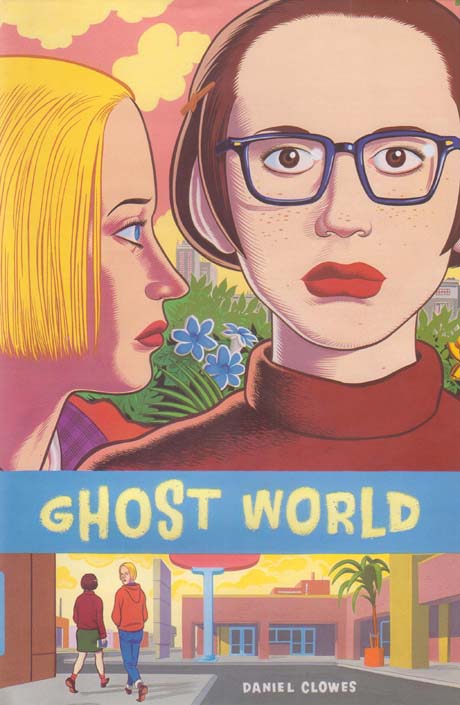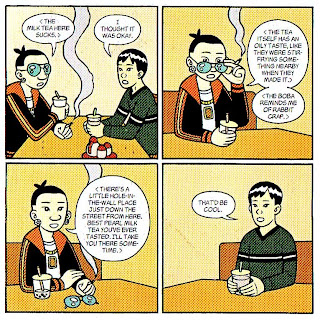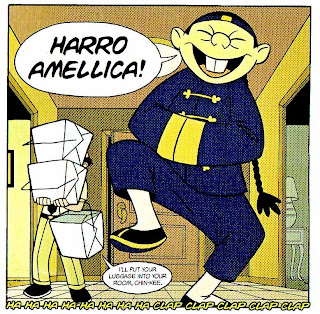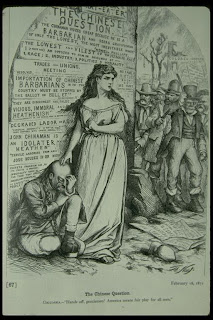When you combine ignorance and leverage, you get some pretty interesting results.
I never attempt to make money on the stock market. I buy on the assumption that they could close the market the next day and not reopen it for five years.
Price is what you pay. Value is what you get.
– Warren Buffet

The reason why I’ve chosen to start this blog entry with some quotes by the world’s most famous investor is, in a sense, the same reason why an economist by training chose to write a book about the contemporary fine art market (the book in question is Don Thompson’s The $12 Million Stuffed Shark: The Curious Economics of Contemporary Art). It is also the reason why the same book has been mentioned sporadically in original art (OA) circles including industry professionals like former TCJ editor, Robert Boyd.
While original art was never designed as an investment tool, that is exactly what it is often viewed and discussed as – often by default considering the high prices commanded in recent years for certain pieces. Certainly original art is viewed as a business by many of the significant players in the hobby and a working knowledge of the original art market is indispensable if anybody has a mind to acquire comics art without losing one’s shirt. It is a rare thing indeed for a discussion of comics art to revolve around the aesthetic qualities of the page in question. Discussions inevitably return to questions of price. Questions of value are often more discretely handled through the privacy of personal messages if at all. Such is the nature of a hobby which values a degree of sensitivity to fellow collectors and their tastes.
Buffet is long term investor who aims to divorce emotions from any act of investment. In contrast a skilled professional trader successfully preys upon the emotions of the amateurs who form the bulk of the market. Buffet’s reminder to assess the underlying value of a stock also applies to a piece of original art. Yet the average collector would have great difficulty in calculating the equivalent of a PE ratio or NAV for a piece of original art. What makes it doubly hard to put various time tested ideas in investing into practice in the original art market is the fact that the appreciation of a significant proportion of the art is predicated to a large extent on fluff – emotions filtered through nostalgia. It is a market ripe for manipulation.

Don Thompson’s book has gained more notice in recent times because of the collapse of the contemporary fine art market.The original art community’s interest in Thompson’s book pertains to its accurate description of the irrational aspects of collecting art, the market forces which can be applied to a hypothetical original art bubble and the apparent immunity of the original art market to such forces.
Here are a few quotes from the book up here which may be relevant to original art collecting not only for their similarities but for their significant differences. I present them without commentary so it would be wise to evaluate Thompson’s statements and facts with care:
“The experienced art collector will take a work home before buying it, to look at it several times a day. The question is whether a week or a month hence, after the novelty disappears, the message and painter’s skill will still be apparent.”
“”Never underestimate how insecure buyers are about contemporary art, and how much they always need reassurance.” This is a truth that everyone in the art trade seems to understand, but no one talks about. The insecurity does not mean art buyers lack ability. It simply means that for the wealthy, time is their scarcest resource…So, very often, the way the purchase decision for contemporary art is made is not just about art, but about minimizing that insecurity.”
“Of the thousand artists who had serious gallery shows in New York and London during the 1980s, no more than twenty were offered in evening auctions at Christie’s or Sotheby’s in 2007. Eight of ten works purchased directly from an artist and half the works purchased at auction will never again resell at their purchase price. In the end, the question “what is judged to be valuable contemporary art” is determined first by major dealers, later by branded auction houses, a bit by museum curators who stage special shows, very little by art critics, and hardly at all by buyers.”
“[Jasper] Johns was in awe of [Leo] Castelli’s ability to market art. In 1960 Willem de Kooning said of Castelli, “That son of a bitch, you could give him two beer cans and he could sell them.” Johns laughed and created a sculpture of two Ballantine Ale empties. Castelli immediately sold the work to collectors Robert and Ethel Scull. The cans are now in a German museum.”

“One former Gagosian employee claims that in about a quarter of the cases, clients says “I’ll take it” without ever asking “What does it look like?” or “How much?”. These are not cold-calls; they are made to existing clients only. Gagosian says he avoids what he calls “impatient money,” that which chases art only as a short-term investment.”
“The reassurance given by the dealer’s brand is reinforced by the behavior of the crowd. As critic Robert Hughes says of New York collectors: “Most of the time they buy what other people buy. They move in great schools, like bluefish, all identical. There is safety in numbers. If one wants Schnabel, they all want Schnabel, if one wants Keith Haring, two hundred Keith Harings will be sold.””

“When a work appears at auction, some dealers bid up to what it would sell for at the dealership, to protect the gallery market. Some buy back the work to protect the artist from going unsold. Opinion differs as to whether such price support is necessary. Some claim that it is an absolute obligation for dealers…”
“When, after a long bidding battle, the auctioneer hammered down Mark Rothko’s painting White Center (Yellow, Pink and Lavender on Rose) at $71.7 million, there was sustained audience applause. What was being celebrated? The buyer’s oil wealth? The triumph of his ego? His aesthetic taste? A new record price, sometimes well above that asked for a similar work earlier that day by the gallery down the street? When the auction hammer falls, price becomes equated with value, and this is written into art history.” [bolds mine]

“Robert Storr…says one of the challenges facing museums is “getting the public to forget the economic history of the object once it leaves the market; the more stress on how much a museum or donor paid…the more likely people will miss seeing the work of art because of preoccupation about the price tag.”….Art critics and curators also follow the dictates of art prices. Expensive work becomes meaningful in part because it is expensive. Critics write essays interpreting the work of Jeff Koons or Tracey Emin – and many articles about Damien Hirst – but never admit that the reason the work has meaning is because so much has been paid for it…The history of contemporary art would be different if there were no reported auction results…”
“How does a work then come to be worth $12 million or $140 million? This has more to do with the way the contemporary art market has become a competitive high-stakes game, fueled by great amounts of money and ego…The value of one work of art compared to another is in no way related to the time or skill that went into producing it, or even whether anyone even considers it to be great art.”
“Perceived scarcity also produces inflated prices. It does not have to be real scarcity; it can occur when an artist’s primary dealer withholds her work and announces the existence of a queue of high-status buyers. It isn’t that anyone believes the artist’s work might never again be available; it is a combination of fear that prices will go up, coupled with the “I will pay to have it now” approach of the wealthy young collector.””
“Art prices are propelled by what is known in economics as a ratchet effect. A ratchet turns in only one direction, and then locks in place…The ratchet effect in art occurs when two collectors bid up the auction price of a Matthias Weischer oil to ten times the gallery’s list price, and this becomes a new reference price below which no collector wants to sell. In an auction, a form of ratchet is at work when the first five items sell for double their estimate. The higher quality items that follow must be worth more.”

“If the ratchet, perceived scarcity, and too much money consistently push prices up, is the entire contemporary art market just a bubble, a form of Dutch tulip craze? Art dealers and auction specialists never use the word “crash”, and hate the word “bubble”. The immutable rule in a buoyant art market is that the participants suspend all doubt.”
“Tobias Meyer famously claimed that “The best art is the most expensive because the market is so smart.” Jerry Saltz responds, “This is exactly wrong. The market isn’t ‘smart’, it’s like a camera – so dumb it’ll believe anything you put in front of it…everyone says the market is ‘about quality’, the market merely assigns value, fetishizes desire, charts hits and creates ambience.”
_______________________________________________
One of the most acrimonious public debates this year pertaining to the wheeling and dealing in the original art market occurred sometime in July on the Collector’s Society original art message board where the collectors Felix Lu (a relatively new collector with a penchant for digging out dirt) and Jonathan Mankuta (a self-described big player in the original art market) clashed over a piece of art. It also involved the dealer Mike Burkey (one of the oldest and most canny dealers in the business) who runs Romitaman.com. It is a dispute which will be very familiar to original art collectors but a short summary might be of some interest to people who don’t indulge.

In short, a Kirby splash page from X-Men #2 appeared on Burkey’s website with an asking price of $150,000. Lu suggested that it was overpriced and actually on consignment with Burkey with Mankuta as the possible consignee. It was a dispute which escalated to accusations of the page being shopped to various collectors with no success prior to the alleged consignment, imputations of nefarious dealings and, not unexpectedly, mutual belittlement. The thread in question can be found here (with a parallel discussion on the Comicart list) and takes in talk (real or suggested) of a black listing, humorous asides concerning black robed original art cabals and exclusive “sandboxes” for the big players in original art collecting. Readers of Seth’s Wimbledon Green will be amused.
Questioning the “ethics” of comic art dealers would also appear to be a particularly touchy subject in the hobby. I suspect that many of these complaints would fall by the way side if most collectors viewed original art dealers in the same way they viewed professional stock traders who I do not consider definitively immoral but who should probably be held at arms length by those seeking to dive into such waters.
It is of course a far cry from the straightforward market manipulation in the contemporary art market as described in Don Thompson’s book or Ben Lewis’ documentary. The asking price of $150,000 for the X-Men splash was probably inflated because of the expectation of a mixture of trade involved in such deals (i.e. deals in which other similarly inflated pieces of art are exchanged). A whole different economy comes into play when cold hard cash is the medium of exchange as it is with most auction houses and sites such as Heritage Auction Galleries which only accepts cash (sometimes leveraged I do believe but still “cash”). This historically important and very early Kirby and Ayers Journey Into Mystery #84 Thor splash which was recently sold for $44,182.50 at a Heritage auction (a mere fraction of the asking price for the X-Men splash) is a case in point.

There are signs though that the original art market is far more healthy than some collectors had hoped. The incredulity which greeted the sale of a Steve Ditko Mr. A splash page (which sold for close to $38,000 at the same auction) is the “freak” result getting the most mileage at present.

For those not in the know, this dollar value is higher than most of the Dtiko Amazing Spider-Man pages sold recently at auction. The same auction saw this Prince Valiant Sunday going for $21,510.

Some believe the depreciation of the US dollar against the Euro is a factor in these relatively high prices but a quick look at the Prince Valiant Sundays which have come up in recent auctions would suggest that the price has also been bumped up by the quality of the Sunday in question. Similarly, a very respectable and historically important Krazy Kat Sunday went for $27,485 at the same auction. It is not the best Krazy Kat Sunday that has come up for auction in recent years but it is perhaps in the top 20% in terms of aesthetic quality if such things can even be gauged accurately.

I believe that the most important reason (and there are many I assure you) for the original art markets apparent resistance to the global economic downturn is that in absolute terms, the sums of money being discussed are still small – even more so in global terms with the falling US Dollar and incipient inflationary pressures. Certainly the sums involved are small enough that any leverage involved is minimal. The entire original art market is insignificant enough in economic terms that it will never be provided with very large amounts of excess liquidity – an important component in the formation of asset bubbles. Nor does it provide anything close to the requisite amount of bragging rights which fueled the madness seen in the fine art market. If there is a bubble forming in comics original art, it is a small one.
This is not to say that current original art prices present themselves as value buys – that’s anyone’s guess. Still it must be said that you couldn’t buy a car (a depreciating “asset”) in Singapore for the cost of the Krazy Kat Sunday mentioned above and there are many of those zipping around the streets where I live. Actually, you couldn’t even pay for the right to buy a car (called a Certificate of Entitlement or COE) in Singapore for the price of an average Krazy Kat Sunday.
I present these facts in order to provide some perspective on the real cost of original art. Prices for original art seem crazy only because of the provincial attitude with which the entire original art market is viewed. I say this even though I’m a collector (albeit a lackadaisical one) of original art myself. While there is something to be said for a certain kind of naïveté there are a number of associated traits which collectors might do well to leave far behind in these shark-infested waters.



































